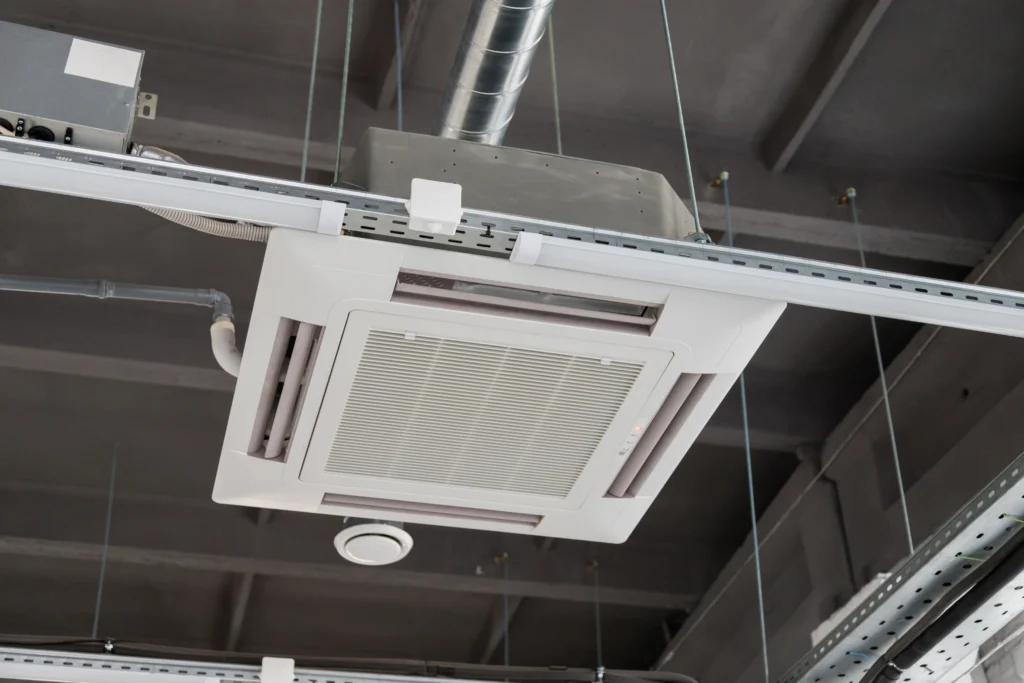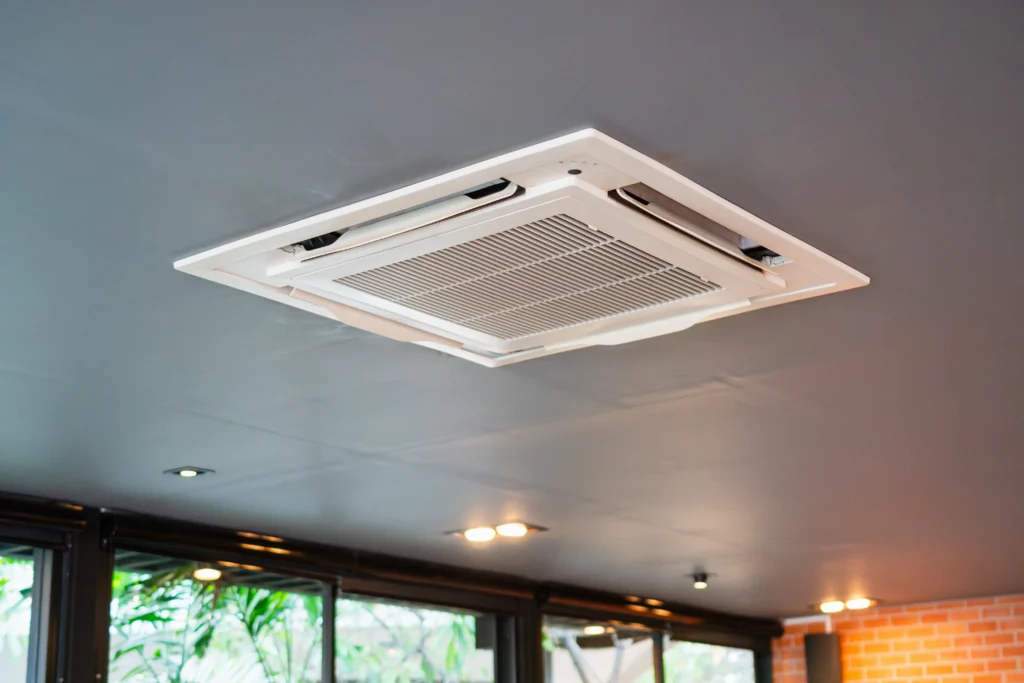
There are moments when your HVAC system appears to be a mystery. It seems as though the terms compressor, evaporator coil, and condenser are interchangeable. However, the terms “air handler” and “air conditioner” are the two that cause the most misunderstanding.
It’s a mistake for most individuals to use them interchangeably. Knowing the difference is essential to maintaining the comfort of your house.
Consider your entire system as the body of a person. If the heat pump or air conditioner is the heart, producing warm or cool blood, then the circulatory system is the air handler. It doesn’t make the blood; it pumps it everywhere it needs to go.
That’s its main job: circulation. This indoor unit, usually a big metal box in your attic, basement, or closet, is the quiet champion moving all that conditioned air through your ducts and into every room.
Your Air Handler: More Than Just a Fan
So what’s actually inside this metal box? The components are collaborating as a team.
The blower fan is the main attraction; it is a shockingly strong motor that actually forces air. The next component is the evaporator coil, a network of pipes that turns extremely cold in order to absorb heat from the air passing over it.
An essential line of defense at the entrance, the air filter stops dust and allergens before they may spread. Heating components and a drain pan are also included for extra warmth and moisture collection.
It’s a Partnership, Not a Competition
Here’s the simplest way to understand it: an air conditioner and an air handler are partners.
Your air conditioner (or the outdoor unit of your heat pump) is the factory. Its sole job is production to manufacture cold air. But a factory is useless without a distribution network.
That’s what the air handlers is. It’s the delivery truck that takes that cold air and distributes it throughout your home. One makes it, the other moves it. You absolutely need both for a central cooling system to work. This is the core of the air handler vs ac unit debate.
Why Your Air Handler is a Secret Weapon for Air Quality
Everyone knows to change their filter, but your air handler does so much more for your air than you realize. It’s not just about temperature; it’s about health and comfort.
The real magic happens with modern variable-speed motors in advanced air handler units. Older units blast on at 100% power and then shut off completely. This constant stopping and starting is inefficient and terrible for controlling humidity.
On the other hand, a variable-speed air handlers can operate constantly at a moderate pace. At a higher thermostat setting, this constant circulation significantly improves the removal of moisture from the air, making your house feel more pleasant and cooler.
Additionally, it allows those air filters more time to filter out small particles, improving the quality of your air.

The Efficiency Hack You’ve Never Heard Of
Speaking of those variable-speed motors, let’s talk about your energy bill. That air handler is one of the biggest energy users in your HVAC system. A standard single-speed motor is like an old gas guzzler, it uses a ton of power every time it starts up and runs.
A variable-speed motor, however, is a modern hybrid. It gently adjusts its speed to use only the exact amount of energy needed.
The Department of Energy notes that these motors can use up to 75% less energy when running at lower speeds. That’s a huge, often overlooked, saving on your monthly bills. This makes a high-efficiency air handler a brilliant upgrade.
Avoid Making This Expensive Error
Consider purchasing a brand-new, high-performance sports vehicle and then equipping it with bald, outdated tires. The handling, safety, and efficiency for which the car was built would never be available to you.
Mixing and matching an old air handler with a new outdoor AC unit is a recipe for disappointment. These parts are made by manufacturers to function as a cohesive system.
A mismatch can result in a system that is up to 30% less efficient than it should be, as well as poor performance and decreased comfort. Your warranty may potentially be void as a result.
Keeping the Heart of Your System Healthy
For condensation to leave, the drain line must be free; a blockage could result in mold growth or water damage. Additionally, have a specialist inspect the electrical connections and motor every few years. An air handler that is properly maintained can last 15 to 20 years, safeguarding both your investment and your comfort.
Conclusion:
There is more to maintenance than simply changing the filter every few months. Your air handler requires a little care to stay in good operating order. The evaporator coils must remain clean in addition to the filter. They cannot effectively absorb heat when covered in dust, which increases system workload and costs you money.
Frequently Asked Questions
What is the job of an air handler?
Cooled air is circulated through your ductwork by the interior unit. It houses the air filter, evaporator coil, and blower fan.
Are furnaces and air handlers the same thing?
No. Fuel is burned in a furnace to produce heat. Usually used in conjunction with a heat pump, an air handler circulates air and provides additional heat using an electric heat strip.
Can an air handler be used without air conditioning?
Indeed. Even when you’re not utilizing the cooling feature, you may utilize an air handler to move air around and add extra heat using a heat pump.
Why is my air handler freezing up?
This is usually caused by restricted airflow from a dirty filter, closed vents, or low refrigerant levels, preventing the coil from absorbing heat properly.
What is the average lifespan of an air handler?
The majority of units have a 15–20 year lifespan when properly maintained annually.
Should I replace my air handler and AC unit at the same time?
Of course. They are made to be replaced as a matched pair for optimal performance, efficiency, and warranty protection.
What’s the benefit of a variable-speed air handler?
Compared to a typical single-speed model, it offers much quieter operation, considerable energy efficiency, and better humidity control.
In a house, where is the air handler located?
It is typically hidden in a garage, attic, basement, or utility closet.
Are air handlers gas-powered?
Generally speaking, no. Electric heat strips and the blower fan are powered by electricity in the majority of air handler equipment. In contrast, a furnace burns fuel like gas or oil.
How much does it cost to buy a new air handler?
High-end versions cost more, but homeowners usually spend between $1,200 and $3,500 for a new unit, with installation prices varying.